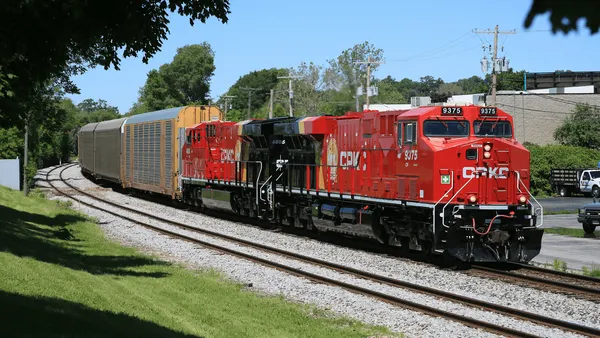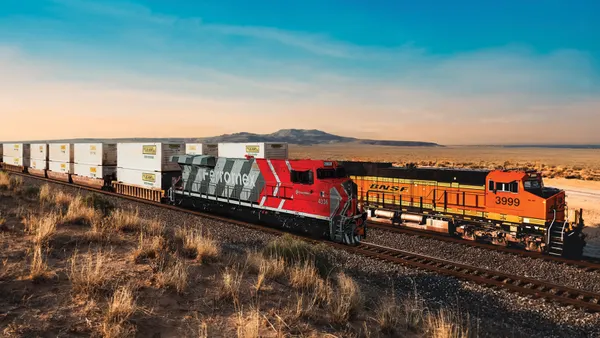Railroads saw the signs early on that the coronavirus pandemic would have a direct impact on their business. A drop in imports in the spring and the closure of automotive plants guaranteed their lines would see less demand. So railroads cut costs by whittling down hump yards and shrinking their workforces.
Some of the railroads told analysts they'd try to keep these cuts as volume returned. And many of them have. Our dashboard tracking the railroad's speed, dwell and cars online shows BNSF, Union Pacific and Norfolk Southern had fewer cars online YoY at the beginning of December.
The volume did eventually return to railroads this year. The freight market was flooded with imports and railroads saw it was an opportunity to position their intermodal business as increasingly truck competitive.
The year allowed companies to showcase the main benefit of precision scheduled railroading: doing more with less. But it wasn't all success this year. Railroads acknowledged that they'd need to improve their trip plan compliance to attract shippers from the trucking market.
Here's a look at how railroads used 2020 as a chance to revaluate.














